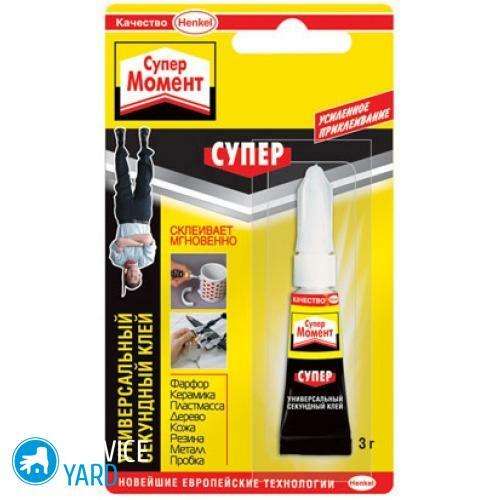Construction of utilities using HDPE pipe be laid in the ground - the currently applied technology. Products made of this material replaces the old - steel.
Changed and conduit mounting technology in the ground. Step by step instructions for the construction of an underground pipeline from polyethylene and the knowledge that it needs help to perform this work on their own.
Features, advantages and disadvantages of HDPE pipes
HDPE (High Density Polyethylene) - a modern, high quality polymer articles which are very popular during the construction of pipelines.

The main positive characteristics of plastic products include:
- ability to withstand high internal pressures (depending on the mix parameters - up to 10 MPa);
- low density of matter, and therefore light weight products;
- resistance to expansion when exposed to heat (less than 3% at the maximum permissible temperatures);
- lack of response to exposure to the chemically active substances and reagents;
- relatively low cost;
- long service life - up to 50 years.
Less Polyethylene products - a limited range of operating temperatures from 0 to 40aboutFROM.
At low temperatures of the tube to become brittle, which may lead to their failure.

When exposed to high ambient temperatures there is the opposite phenomenon - the material softens and loses its necessary operational rigidity.
This shortcoming makes it undesirable use pipes made of polymers on exposed areas and make demands upon their installation in the ground below the frost or with warming.
How to prepare the trench for laying of highway
Putting the plan to build a communication on paper, you can proceed to the practical implementation.
on laying the ground work in the track of the HDPE pipes start with trench equipment.
The following conditions must be met:
- trench depth should be such that the communication underlain at least 0.5 m below the ground freezing;
- at the bottom of the trench is equipped with theft of sand (in solid ground) or bedding gravel fine fraction (on loose soils).
This pillow is not only aligns the bottom of the trench, but also protects the pipe from deformation under load.

Polyethylene gasket sewage is not recommended at a depth of 2.5 m.
Incremental algorithm trench device:
- Partitioning according to plan, the pipeline on the cord;
- Excavation (manually or using machinery).
- Preparation of the track bottom (seals and equipment bags).
HDPE pipe laying technology in the construction of sewer systems assumes as a general rule, the presence of the gradient at 1-2 degrees per meter length.

The width of the trench is selected taking into account the convenience of the installation work.
How to put a pipe in the ground
Mounting starts from the water intake point or drains. The mixed material previously laid on the edge of the trench.
In pipes with socket it is important to choose the right direction of the socket - opposite the sink.
Further laying process is as follows:
- cleaning of sockets and joints;
- mark the maximum depth of entry of the pipe into the socket;
- coupling one end of the other pipe socket, but not all the way - with the required gap of 1 cm.
We need to be guided to make a mark. This clearance is necessary to compensate for the spontaneous deformations of the track.
During the construction of the communication of polyethylene close to the freezing point of the depth necessary to make its insulation. When laying trench method frequently used for thermal insulation vspenonny polyethylene.

This heater has excellent thermal insulation properties and the vapor resistance, density and possesses good elasticity.
The sealed tube connections
Tightness of HDPE pipes provided with rubber seals. When laying an underground pipeline is necessary to provide additional sealing it into the ground socket connections. This is dictated by the difficulties of fault identification and repair of the system in the event of leaks or falling into her groundwater.
sealing silicone
For sealing joints used polymeric sealants. The most popular of them - silicone, which includes rubber. In operation, the material has good elasticity, high degree of adhesion and withstand heavy loads.
In the market you can choose sealant for specific operating conditions of sewer or water systems.

Composition is applied without any gaps to the inside of the socket and the outer portion of the butting pipe with it, and after the sealant compound to be laid over the entire circumference and to the outer part of the joint. The seam is aligned soft spatula or wet conditions on a gloved finger.
Important! After docking tube silicone sealant is necessary to immobilize the compounds of portions for at least 4-6 hours.
Sealing adhesive tape
To seal corners rotary pipe stub or tap taps effective adhesive tape. In its composition includes bitumen-polymer materials, which ensures complete water resistance.
Work with tape easily:
- Prepare portions of pipe connections, clearing them from dirt and primed.
- Reel tape at constant tension from 50% overlaps in the joint portion, preventing wrinkling and distortion.
Apply the tape to a dry surface layer of mastic inward spiral.

Advantages of the sealing tape:
- long service life with integrity preservation - more than 30 years;
- exception deformation when properly applied;
- mechanical strength and chemical resistance and soil corrosion.
For sealing the communication route in the land of the winter is better to use a tape with the letter "Z" in the labeling.
Methods of pipe joints
IPA conduit can be installed one-piece and detachable way.
Split method
This is the most simple variant of pipe joints. He suggests flare or in fitting their conjugation.
For fixing special elastic seals used in the socket. One hundred percent leak, this method does not, therefore, used in the construction of non-pressure networks.
Bole reliable way to mount plastic line - with fittings.

Compression fittings are used for mounting pipes of small diameter - 63 mm.
Tools required for detachable mounting:
- hacksaw or knife-pruner;
- or the Calibrator nazhdachka- chamfering;
- Mounting key for HDPE fittings;
- manual or electric pressing tongs.
For professional work you can buy more expensive equipment - manual hydraulic press.
one-piece method
Pipes of a larger diameter are welded: butt or using of electro.
For butt welding pipes are laid in a special apparatus, which fixes them, and then heats up, leading to a viscous state ends. After which they are pressed with a force and are welded to each other.
Electrofusion welding is done using special connectors and poses little difficulty. Inside moldings mounted low-temperature electric coil, which is heated under tension and welds the sleeve.

For welding HDPE pipes requires a special apparatus. These compact machines - not cheap equipment, and is used, as a rule, professional artists. The acquisition of the welding machine is not rational for a single work.
The method allows the welding track installation in cramped conditions.
Regulatory requirements SNIP
SNP requirements for the width of the trench for laying pipes with diameters of up to 0.5 m, as follows:
| Type of connection | The width of the trench |
| welded | D + 0,5 m (D - diameter of the pipe) |
| flare | D + 0,6 m |
| Flange | D + 0,8 m |
The piping is installed from IPA SNiPY:
- welding work can not be carried out at a temperature below 10aboutFROM;
- necessary to protect the welding spot against rain, dust and dirt.
It is forbidden to weld pipes and fittings made of different materials.
How to close the trench
While seemingly simple matter of filling the trench line after installation, these works should be taken very seriously and competently.

You can use the extracted while digging the ground for closing the trench, if it is sufficiently clean and fluffy. Large stones, larger than 2.5-3 cm, it is necessary to remove from the earth.
When the backfill soil is necessary to observe the basic rules:
- Work is performed, slowly and carefully;
- not rub directly on the ground line, and lay the ram and layers of 10 cm on both sides of the pipeline, fixing horizontally.
For sealing you can use gravel or schebonku, alternating layers of backfill with soil.
Important! Do not use excessive force to compact soil directly above the pipeline.
The use of HDPE pipes for cable protection
Great use of HDPE pipes for cable found.
The communications cable under the ground are often used double-wall corrugated pipe. They are durable, have a good ring stiffness and elasticity.

Considering the construction technology cable line, the tube can be supplied with the probe for pulling the cable.
When laying electric cables special corrugated plastic products can be used in the construction of buildings.

The cable can be laid in regular communication of IPA, with fitting connections.

Communications are fixed at pre-selected sites of the structure, and then extends them through the cable.
Possible difficulties and advice masters
When underground construction line of polyethylene may encounter some difficulties. These include:
- soil features (Kamenistaya fluctuation, humidity, waterlogging, heaving);
- high location of groundwater;
- located on the route of other underground utilities.
Therefore, before the work is necessary to conduct the necessary studies and to take into account all the design stage.
Skilled craftsmen are also advised to:
- the tightness of the fittings to produce with care, without using force;
- divergence in the cross section of welded pipes must not exceed 10%;
- butt welding of polyethylene products to make a seam.
Following the advice of the reduced compliance and communications construction technology of HDPE pipe ensure reliability, functionality and long-term operation of engineering systems.



